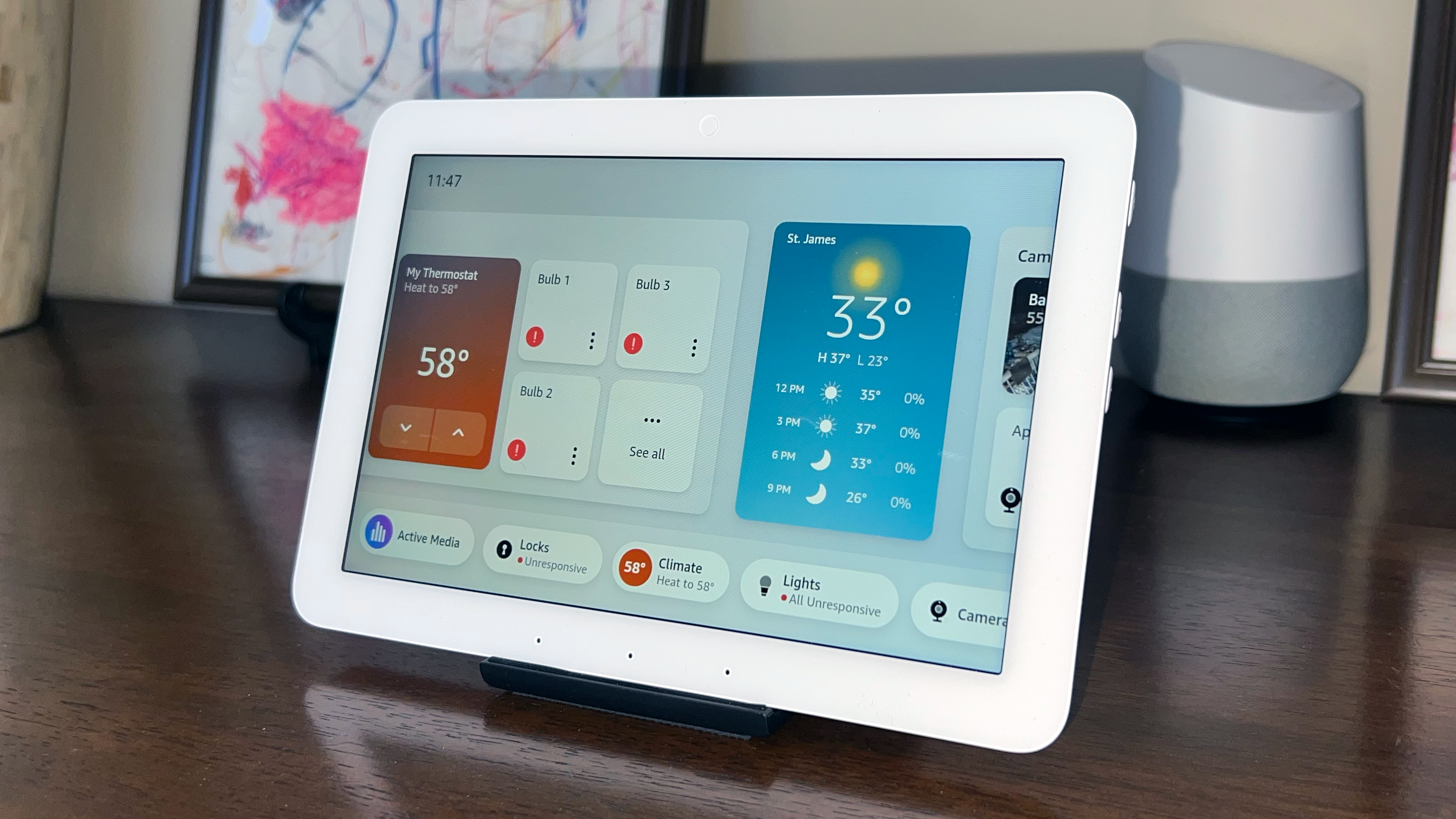
Price: $179.99
Size: 7.9 x 5.4 x 0.6 inches
Weight: 12.9 ounces
Display: 8” touchscreen (1280 x 800)
Sensors: Passive infrared (PIR) sensor for proximity detection, ambient light sensor (ALS)
Connectivity: Bluetooth and dual-band Wi-Fi, 802.11a/b/g/n/ac Wi-Fi networks
Smart Home Device Compatibility: Wi-Fi, Bluetooth Low Energy Mesh, Zigbee, Thread, and Matter
Audio: Dual speakers w/ stereo playback
Processor: MediaTek MT 8169 A
If you own more than a handful of smart home devices, then you know it can be a total PITA to manage them all. Amazon’s Echo Hub aims to streamline your controls as the ultimate command center for your Alexa smart home. Its vibrant 8-inch screen can be mounted to your wall or placed on a stand to quickly show you the status of your connected devices, live security camera feeds, and real-time widgets at a glance. I’ve been using it for the past week to control dozens of the best smart home devices I have installed throughout my home, and it does the job as advertised.
But with the Echo Show 8 offering stellar value and the Echo Show 15 providing the large shared family hub experience, where does the Echo Hub fit in? And how much better is its smart home management experience? Here’s how it performs and where it sits among the best smart displays we’ve tested.
Amazon Echo Hub review: Price and availability
The Amazon Echo Hub is available on Amazon for $179.99 and comes in a single Glacier White colorway.
Amazon Echo Hub review: Design
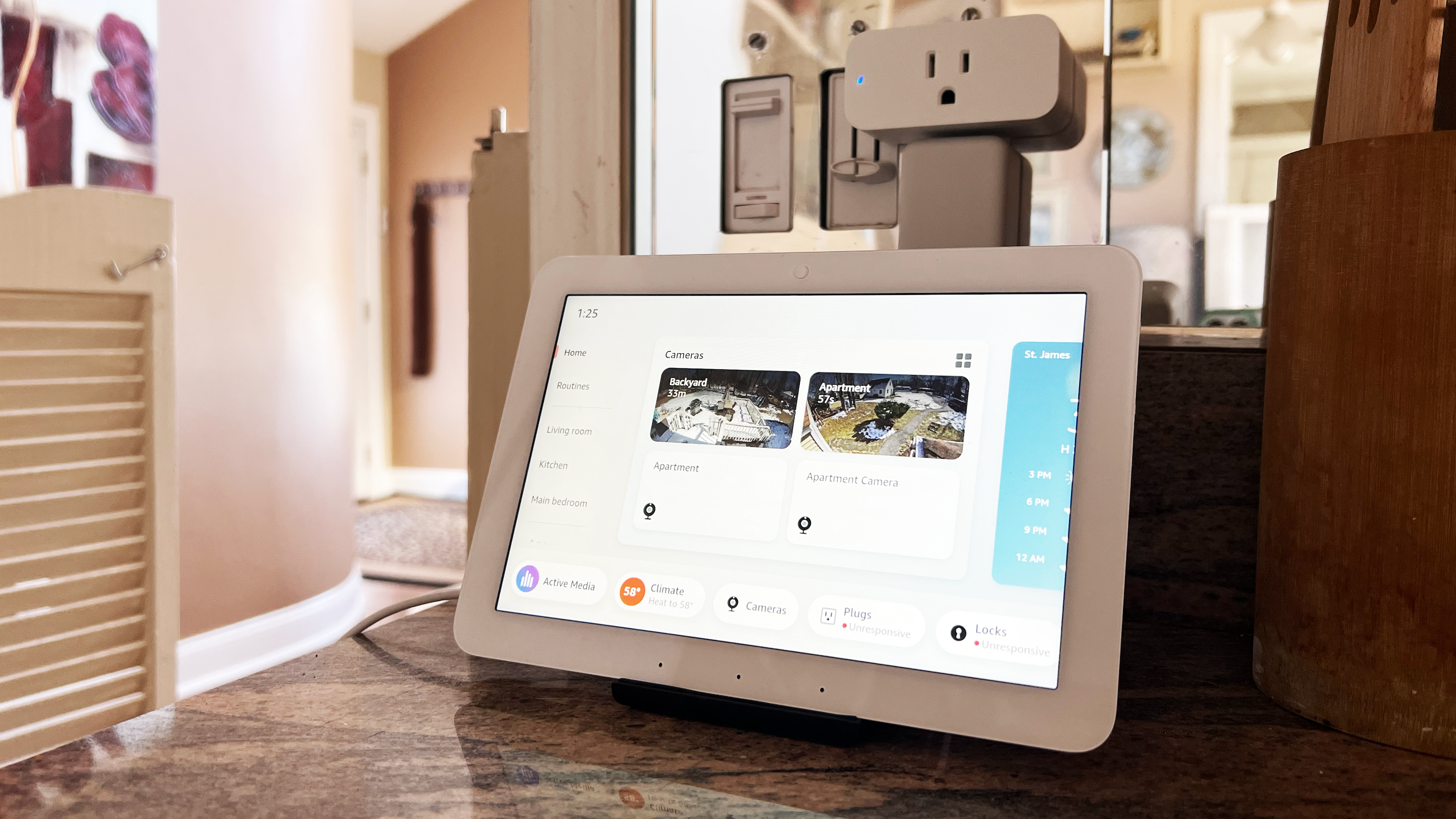
The Echo Hub’s body leans a bit thick at 0.6 inches, which is the size of two Google Pixel Tabs pressed together. Its all-white body looks and feels premium with a sleek glass finish over the touchscreen display.
This display features a proximity sensor on top that uses infrared technology to detect when someone is nearby to naturally transition from a screen with a clock and photo display (selected from curated backgrounds or personal photos) to a smart home control panel. Though the 8-inch screen is rather smaller, it’s still sharp enough to see time, weather and photos from across the room.
The display is powered by an included 6-foot USB-C wire, which plugs into the single port on the back. There’s a cavernous cut-out with clips on the back to wrap the additional cord length around so you can neatly mount the Hub to your wall where it looks like a smart thermostat or alarm panel. That said, you can purchase a stand separately if you imagine you’ll be moving the Echo Hub around your home.

Physical buttons rest along the right-hand side and include volume up, down and a mute switch for the four-microphone array, which is pretty standard fare for an Echo device. Audio comes out from the top of the Hub out of dual stereo speakers. It sounds crisp enough, even at loud volumes, but you’re not getting any form of bass with this device. Amazon makes it clear that this isn’t a media-first device and emphasizes this point within the its “Active Media” tab that nudges you to share your sound to your preferred connected Alexa smart speaker or your whole-home audio group instead.
Amazon Echo Hub review: Alexa and Smart Home Features
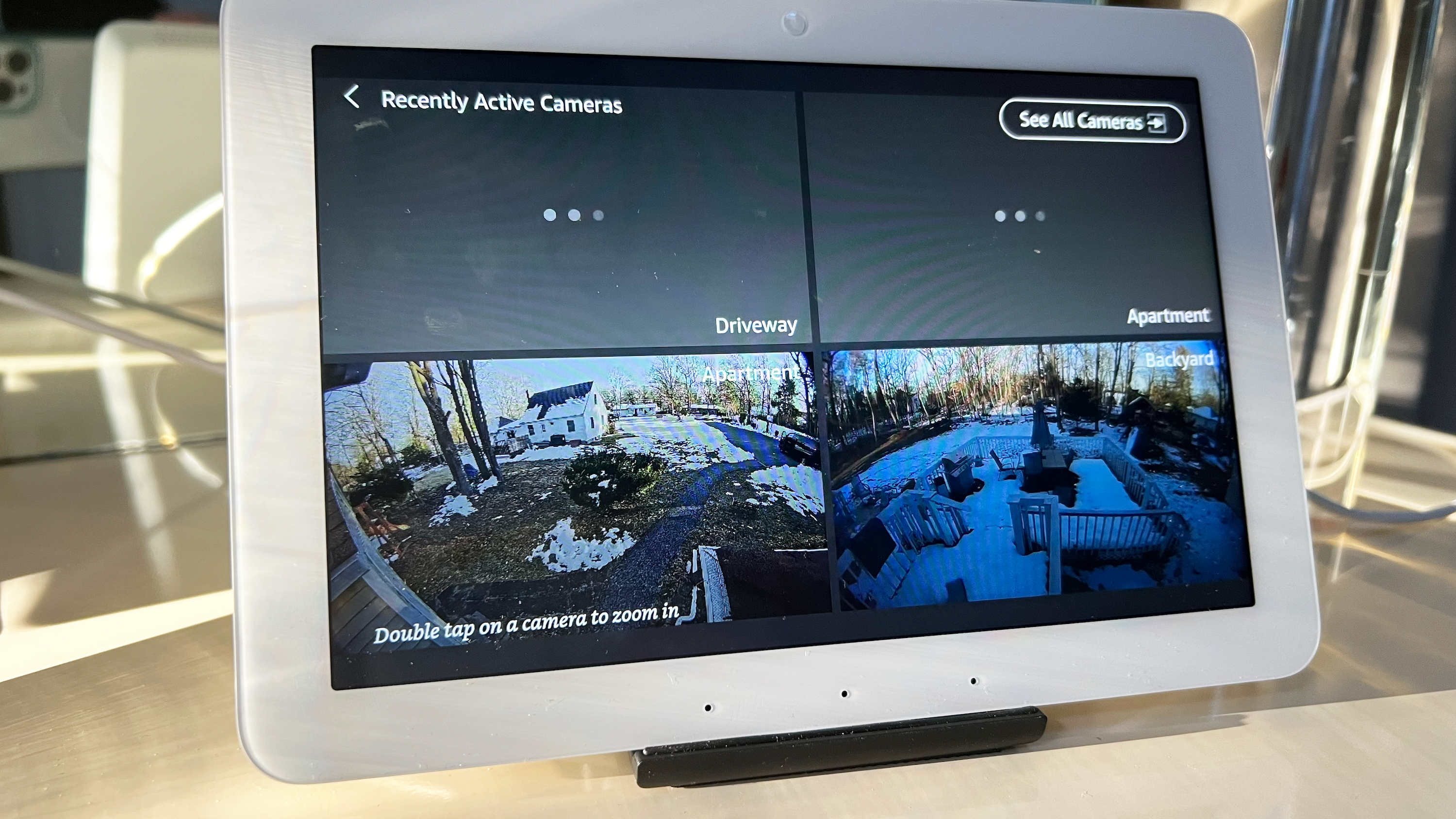
Once you plug in your Echo Hub, it asks to connect to Wi-Fi so that you can sign into your Amazon account. This will sync your existing Alexa smart home devices and room groupings with the Hub. After set up, you’ll see the Echo Hub is much different from the media-focused Echo Shows. The Echo Hub’s main menu is a simple, well-thought-out smart home dashboard with panels and shortcuts that neatly organizes your rooms and routines on the left side in a list. You can effortlessly tap between the panels and live widget titles. By default, the widget collection includes a multi-camera live view, a grouping of devices for the room the Echo Hub is placed in, and a device favorites tab. This provided quick access to my most- used devices like the Switchbot attached to my garage door opener to open up for my truck each morning.
Device categories are always in view since this bar lives along the bottom of the screen. That way you can quickly jump into your smart lights, plugs, locks, the list goes on. You can organize how you want your rooms to be listed, move widgets around the screen, and access the Amazon Widget Gallery to add things like your to-do to the view. Everything is so cleanly laid out that even if you want to add a widget for recent deliveries or music recommendations, they don’t bombard you as they do on Echo Show and keep your smart devices at the forefront of the experience.
The Echo Hub is a built-in smart home hub, too. It supports Bluetooth, Matter, Thread, and Zigbee so it's almost universally compatible with a wide variety of existing smart home devices and more to come.
I had no problem connecting to my older Zigbee smart lock and smart plugs and this mesh protocol is just nice to have since it lets you control devices locally even if the internet goes down. What I found super cool is the way it streamlines pairing a new device. From a Sengled smart light to a mix of the best smart plugs, I just had to say “Alexa discover my devices” to see them pop up on the screen and could add them into the mix quickly with a press.
Amazon Echo Hub review: Performance
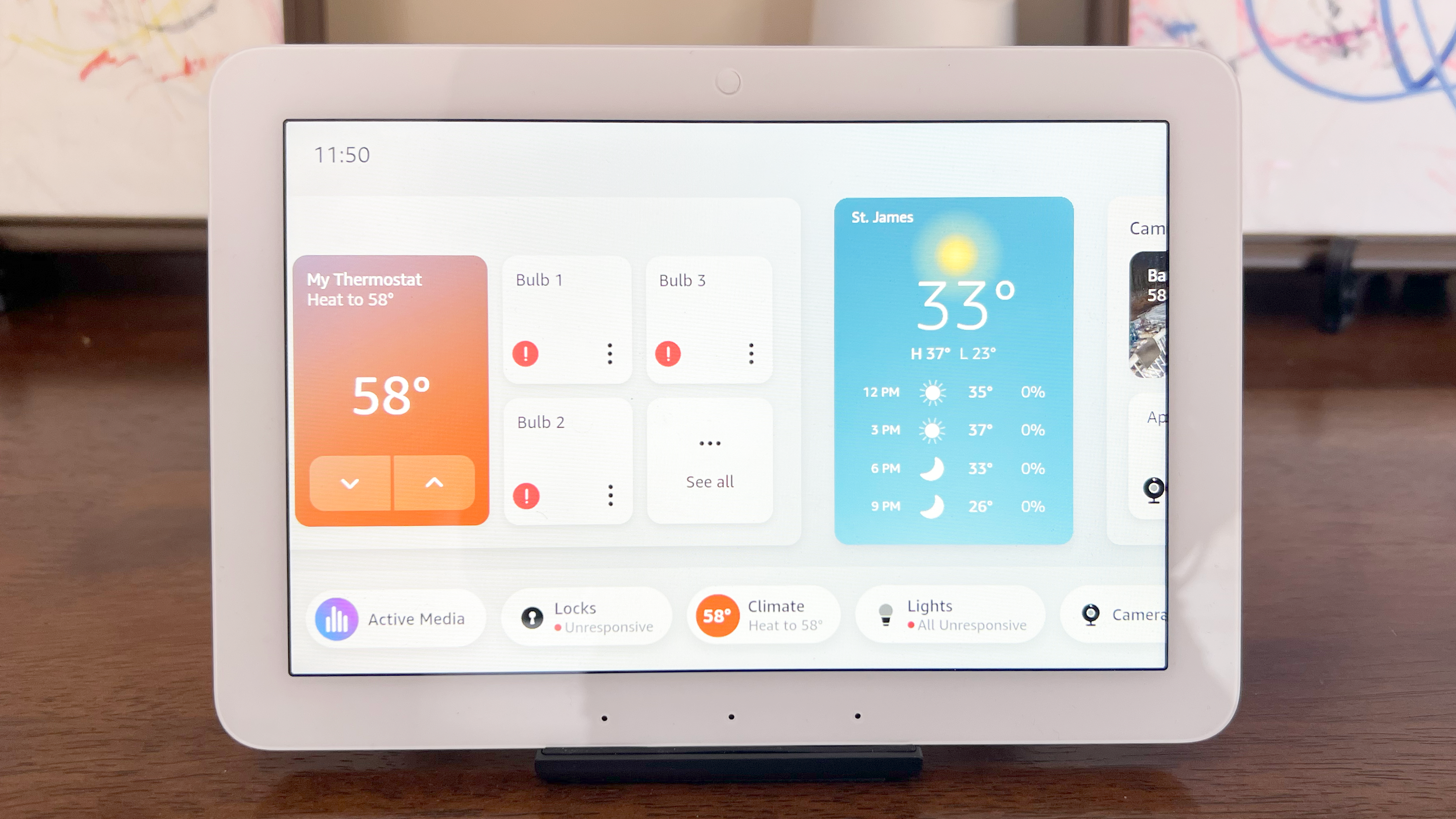
Throughout the week the Echo Hub naturally fit into my everyday routines. I used it primarily as an intercom to drop in on my other Echo smart speakers to check in on my younger sisters as I cooked. As I typed away at my dining room table I could see who was at the door through my Ring Video Doorbell Pro plus know exactly when packages were getting delivered. Even something as simple as toggling down my smart thermostat felt smooth because the animated buttons were right there in plain view rather than asking or jumping through hoops to reach it. Plus I added extra functionality by accessing Amazon’s widget gallery to add the Sticky Notes app to make reminders that sit on the screen.
On other Echo Shows the Hub’s size or smaller, widgets are squished into buttons you have to tap on to expand. I was pleased to see Amazon make the most of the screen—live widgets are the reason I like the Echo Show 15 so much. They make operating your smart home seamless by leaving multiple apps open and running so I can simply drag down the light brightness slider on the fly, adjust light colors, or dial in my smart thermostat without hopping through menus. There’s no perceptible delay when I input these actions and the Hub almost feels like a hardwired switch connected directly to the bulbs or the actual smart thermostat itself.
Its new MediaTek processor is snappy—asking Alexa questions like what time it is or the weather nets you an immediate answer. This also applies to how fast the assistant applies actions, with Alexa turning on the lights within a second of receiving the request. Even taxing activities like hopping between multiple live Ring camera feeds felt buttery smooth and they looked great even when zooming in.
Amazon Echo Hub review: Verdict
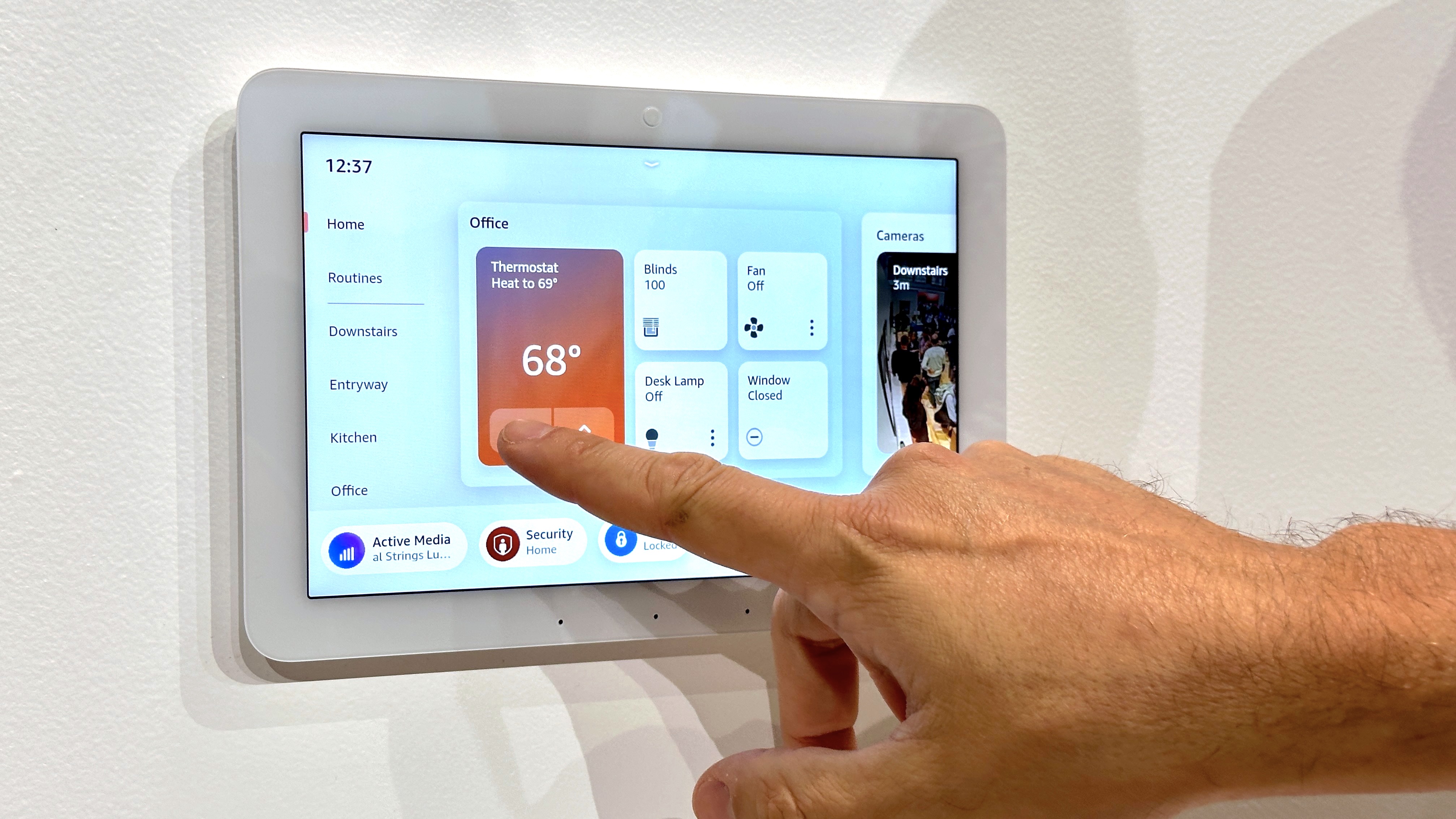
This Echo control panel is worth the price for any Alexa smart home and a great choice for those who want an Alexa-powered smart display with the live widgets of the bulky Echo Show 15 without the size. The streamlined and hyper-customizable dashboard puts every aspect of your smart home at your fingertips, and its versatile connectivity as a home hub means it can connect to thousands of devices effortlessly.
If you’re not someone with a home decked out in security cameras or care more about media playback, then this might not be the best smart display for you. However, the live widgets, ease of kicking off routines, and quick access to devices makes managing my smart home so much easier to the point that I want two more Hubs, one for my bedroom and another for my kitchen at all times. This could be even cooler if Amazon let you mount it between wall panels in rooms or dock it to a speaker system like the Google Pixel tablet. Still this first pass feels great to use and is easily one of the more exciting smart home devices of the year.







